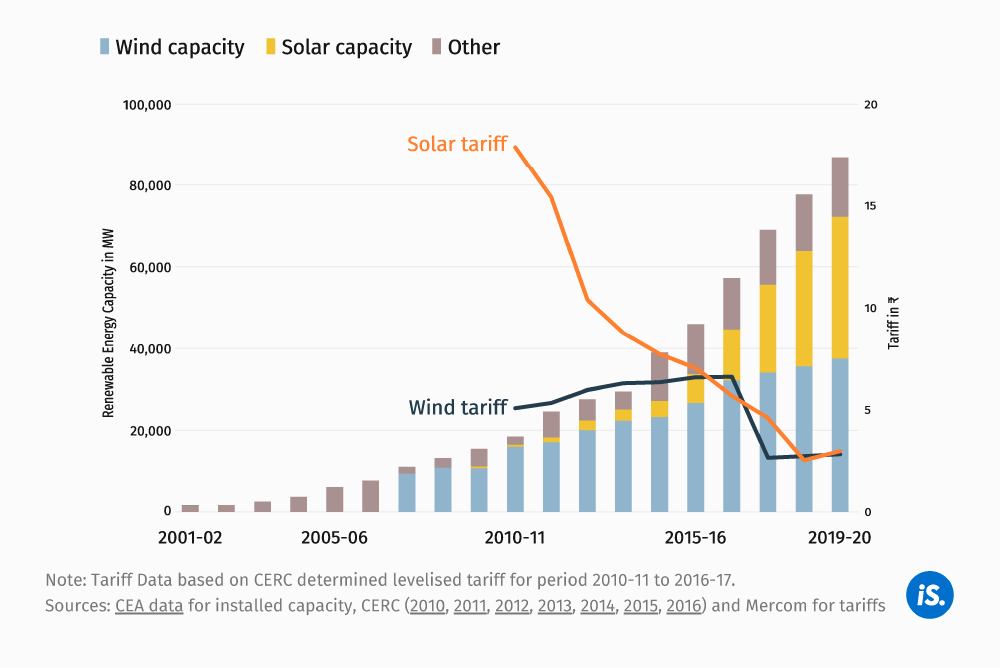How Renewable Energy Took Off In India
Falling tariffs, aggressive targets and government incentives have helped scale up rapidly

Renewable energy has been one of the fastest growing sectors in India in recent years, as successive governments have prioritised it. Primary among the reasons is the quest for energy security, as most of the conventional energy sources in India are either imported or of poor quality. In contrast, India is rich in renewable energy resources, given its wide and diverse geographical features. More recently, the global focus on climate change and pollution has further spurred the growth of RE in India.
Falling tariffs have helped, with more recent RE tariffs being lower than the cost/price of coal-based power. Solar tariffs have fallen more dramatically, thanks to rapid large-scale installations across the world.
Another important reason, specific to India, has been the change in the model of sourcing power. Earlier, the government's focus was to provide tax and tariff subsidies to RE projects. In recent years, this has changed to awarding large projects through reverse auctions (similar to how mobile spectrum is awarded, where the lowest bidder wins the project). This has resulted in global investors setting up very large projects, at very low tariffs.
With RE power now cheaper than conventional power, it has become attractive for distribution companies (or 'discoms'). At the same time, many industrial and commercial establishments also find RE power, especially solar, cheaper than the cost of sourcing power from the discom. They set up 'captive' power plants, mostly on rooftops and/or industrial/commercial premises for their own use.
This, combined with aggressive targets and push from governments has resulted in significant increase in RE capacity in the country.
We welcome feedback. Please write to respond@indiaspend.org. We reserve the right to edit responses for language and grammar.


